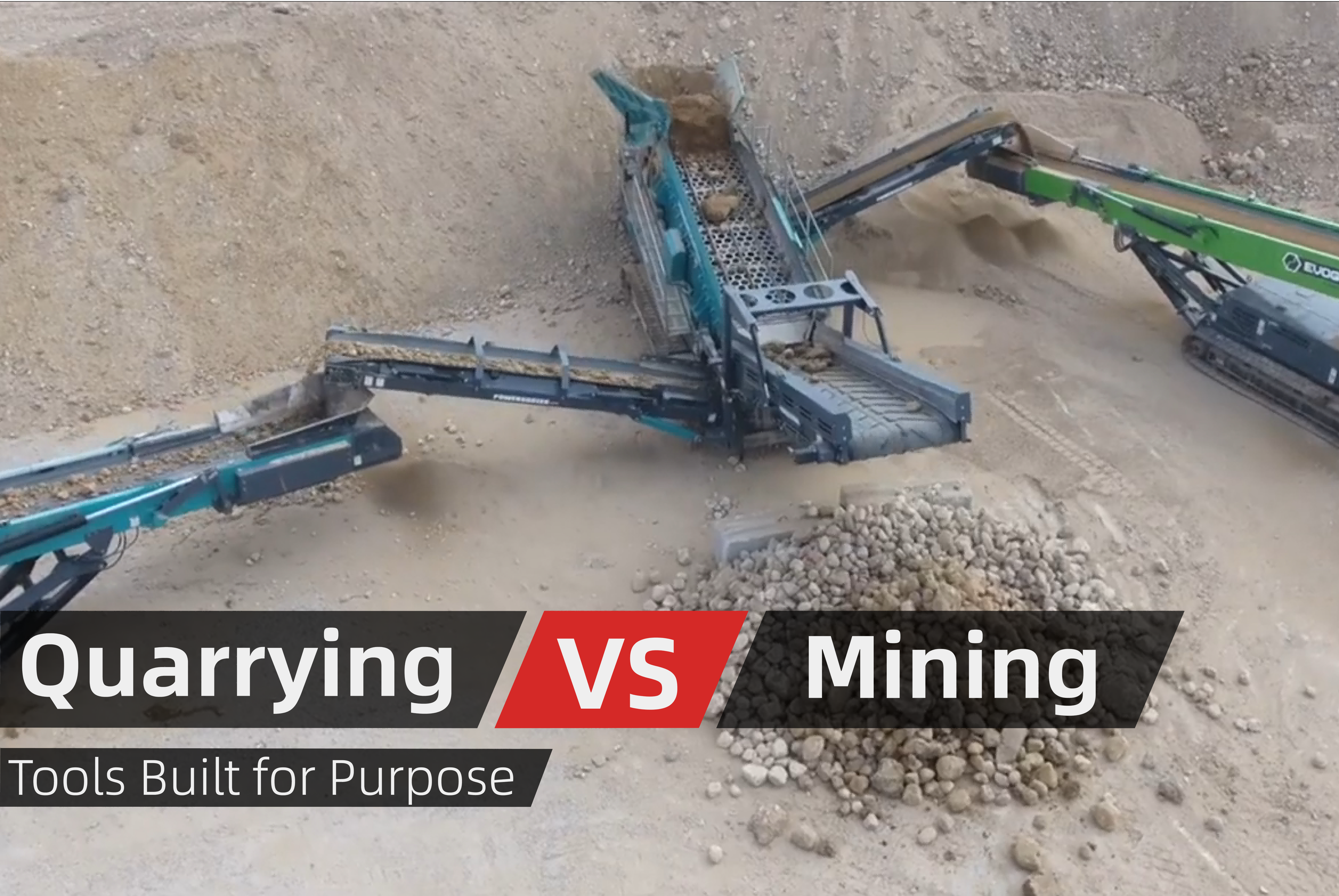
In the world of heavy industry and material extraction, the terms quarry machine and mining equipment are often used interchangeably. However, despite some overlap in their functions and technologies, these two categories of machinery serve distinct purposes and operate under very different conditions. Understanding their differences is essential not only for equipment buyers and project planners but also for SEO professionals targeting the construction, mining, and aggregate industries.
This article breaks down the definitions, key functions, types, use cases, environmental requirements, design considerations, and cost implications of quarry machines and mining equipment. We’ll also explore how modern technologies, such as automation and mobility, are influencing both sectors.
A quarry machine refers to any equipment specifically used in the process of extracting raw materials such as limestone, granite, basalt, marble, and other types of hard rock from open-pit sites known as quarries. These machines are primarily focused on producing aggregates and dimensional stone used in construction and infrastructure projects.
Real-World Examples:
Mobile Jaw Crushers (e.g., Vertex VCJ1070x760): These are commonly used in quarry sites to perform primary crushing of large boulders directly at the extraction point. With a high feeding capacity and integrated conveyors, machines like the VCJ1070x760 allow quarry operators to turn massive stone blocks into manageable aggregates on-site, reducing the need for transport.
Hydraulic Wire Saws: In dimensional stone quarries, such as those producing marble or granite slabs, hydraulic wire saws are employed to cut blocks with high precision. These machines use a diamond-coated cable to cut through stone in a continuous loop, ideal for quarrying ornamental or architectural stone.
Drilling Rigs: Quarrying operations use surface drilling rigs for creating blast holes. For example, in a limestone quarry, crawler-mounted hydraulic drill rigs create uniform boreholes, which are later filled with explosives to fragment the rock efficiently.
Mobile Vibrating Screens: After crushing, quarry material often needs to be sorted by size. Machines like the Vertex VCS crawler vibrating screen help separate crushed aggregates into different grades on-site, improving production efficiency and product quality.
Quarry machines are optimized for open-sky environments, often working in relatively controlled terrain, which allows for larger, less compact equipment and simpler logistics compared to underground mining operations.
Mining equipment refers to machinery designed for the extraction of valuable minerals or geological materials from beneath the earth’s surface. This includes metals like iron, copper, gold, and rare earth elements, as well as non-metallic materials such as coal and salt.
Mining equipment is built to withstand harsh, deep-earth environments with intense dust, vibration, moisture, and pressure. These machines often operate in confined spaces and must conform to strict safety and ventilation requirements.
The primary difference between quarry and mining equipment lies in their working environment:
Quarry Machines:
Mining Equipment
While some crushing and screening machines appear in both sectors, they differ in configuration. For example, a cone crusher used in mining will often be built with reinforced materials and dust suppression systems for enclosed environments.
Modern quarry machines often integrate mobile systems to move easily between extraction and processing zones. For instance, a mobile impact crusher in a quarry can be relocated daily depending on the location of the raw rock. This flexibility reduces material handling and improves output per shift.
In contrast, mining equipment is typically more static, operating in fixed circuits deep underground. However, mining operations are increasingly adopting autonomous vehicles and remote-controlled drilling machines due to safety and labor constraints.
Quarry machines, operating above ground, are generally easier to access and maintain. Replacement parts and maintenance crews can often respond quickly to breakdowns. Additionally, energy costs may be lower as most quarry machines run on diesel or electricity without extensive ventilation systems.
Mining equipment, conversely, requires more complex maintenance procedures. Downtime can be longer and more costly due to the inaccessibility of parts and the high labor demands in underground conditions. The initial investment for mining machinery is also typically higher due to reinforced components and specialized functions.
When selecting between quarry machines and mining equipment, project-specific needs must guide the decision: